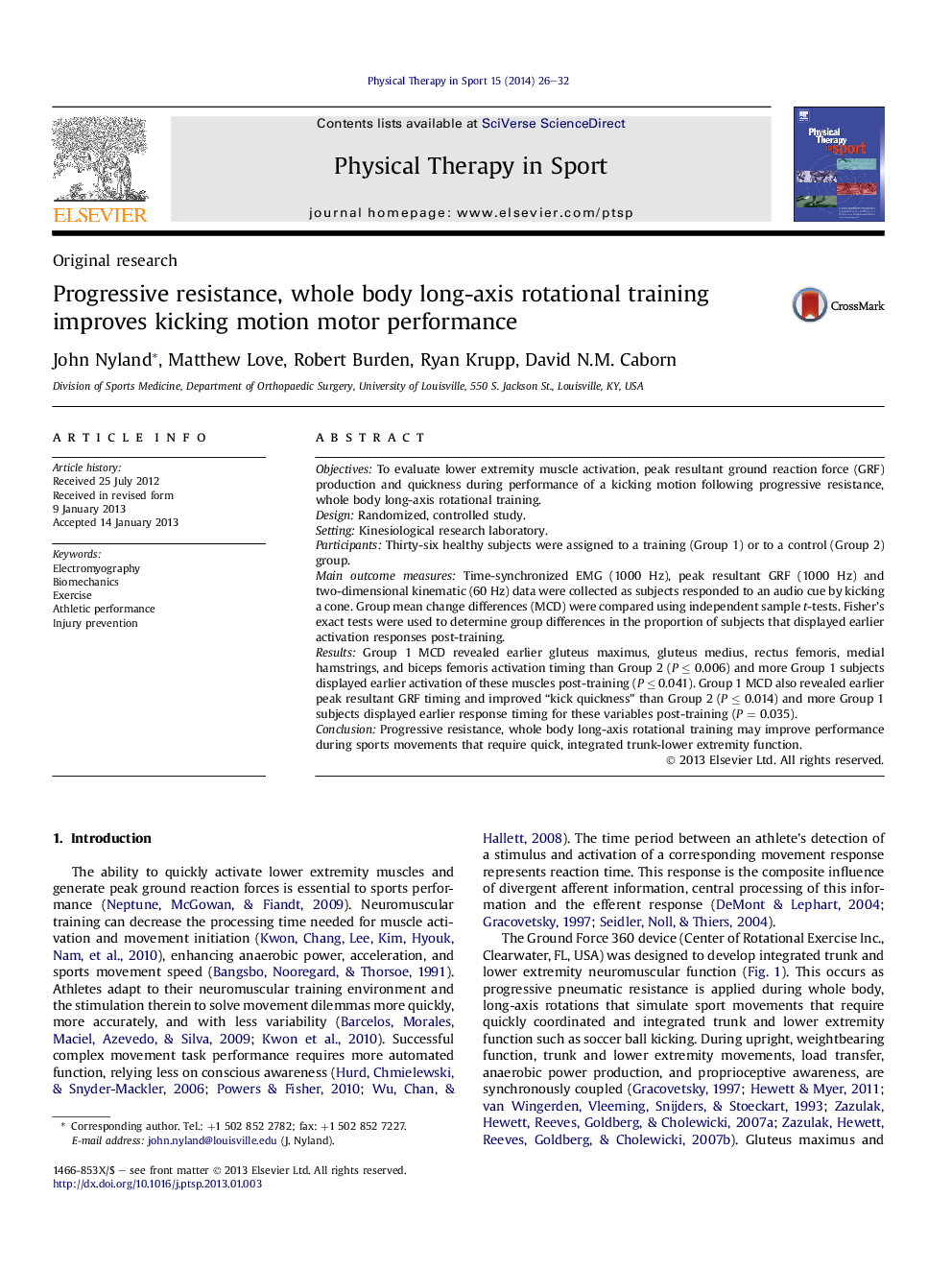| Article ID | Journal | Published Year | Pages | File Type |
|---|---|---|---|---|
| 2703707 | Physical Therapy in Sport | 2014 | 7 Pages |
ObjectivesTo evaluate lower extremity muscle activation, peak resultant ground reaction force (GRF) production and quickness during performance of a kicking motion following progressive resistance, whole body long-axis rotational training.DesignRandomized, controlled study.SettingKinesiological research laboratory.ParticipantsThirty-six healthy subjects were assigned to a training (Group 1) or to a control (Group 2) group.Main outcome measuresTime-synchronized EMG (1000 Hz), peak resultant GRF (1000 Hz) and two-dimensional kinematic (60 Hz) data were collected as subjects responded to an audio cue by kicking a cone. Group mean change differences (MCD) were compared using independent sample t-tests. Fisher's exact tests were used to determine group differences in the proportion of subjects that displayed earlier activation responses post-training.ResultsGroup 1 MCD revealed earlier gluteus maximus, gluteus medius, rectus femoris, medial hamstrings, and biceps femoris activation timing than Group 2 (P ≤ 0.006) and more Group 1 subjects displayed earlier activation of these muscles post-training (P ≤ 0.041). Group 1 MCD also revealed earlier peak resultant GRF timing and improved “kick quickness” than Group 2 (P ≤ 0.014) and more Group 1 subjects displayed earlier response timing for these variables post-training (P = 0.035).ConclusionProgressive resistance, whole body long-axis rotational training may improve performance during sports movements that require quick, integrated trunk-lower extremity function.
